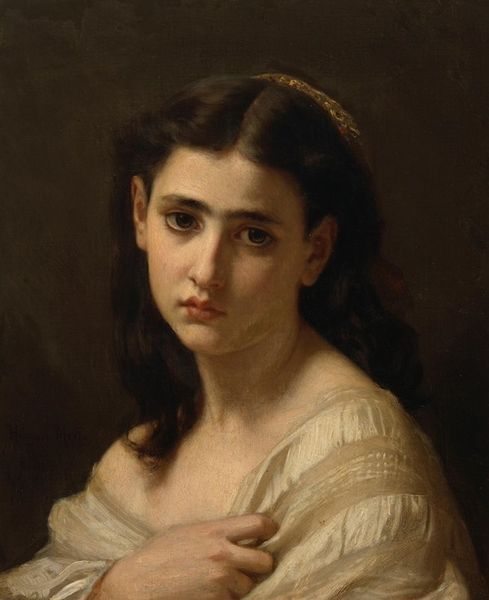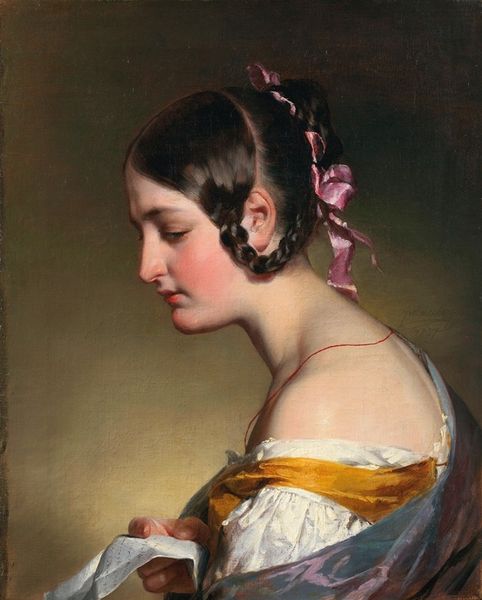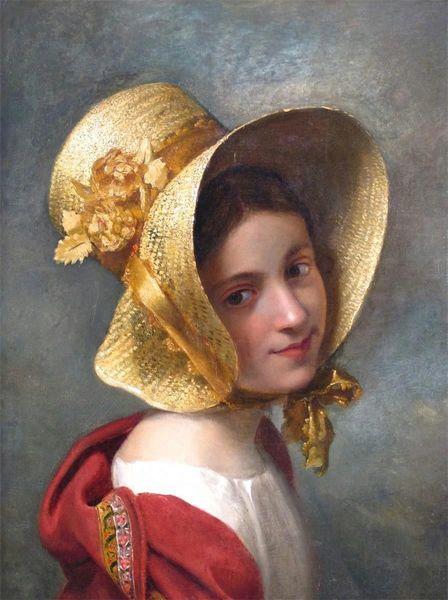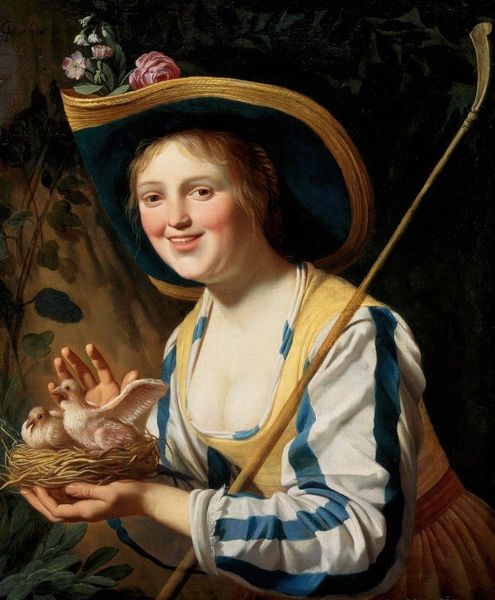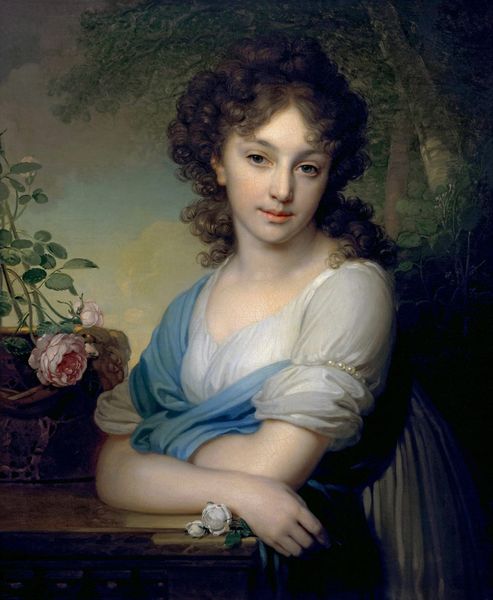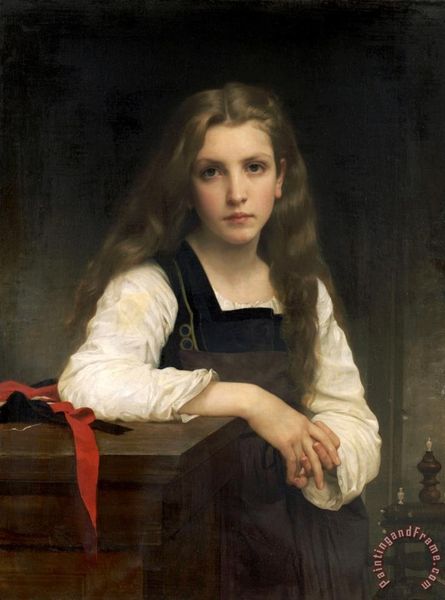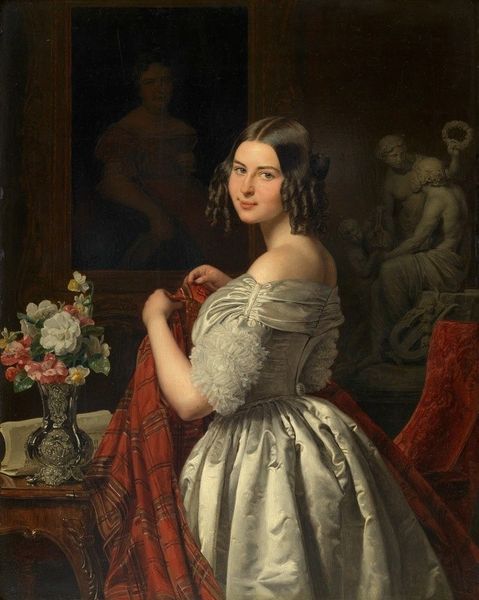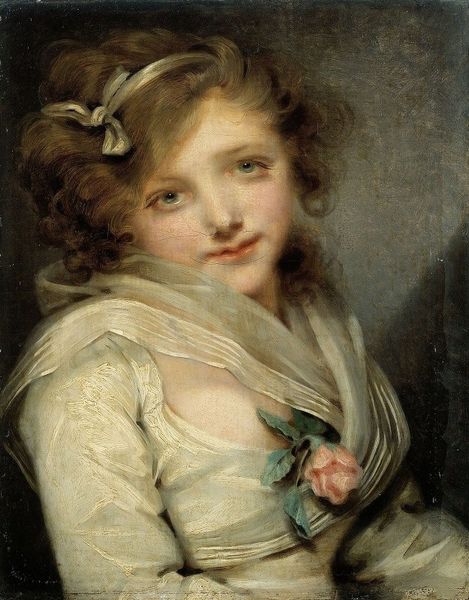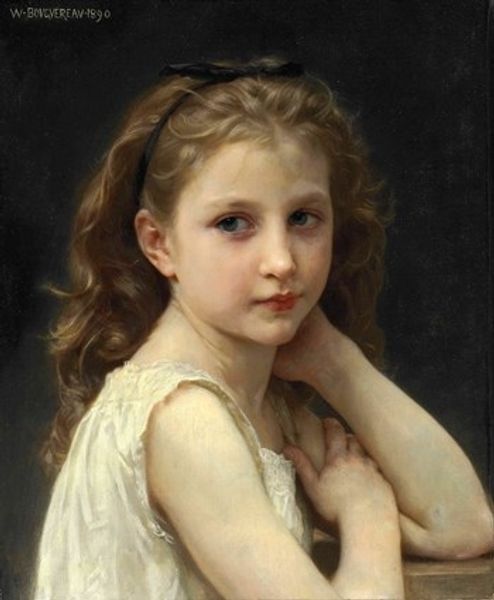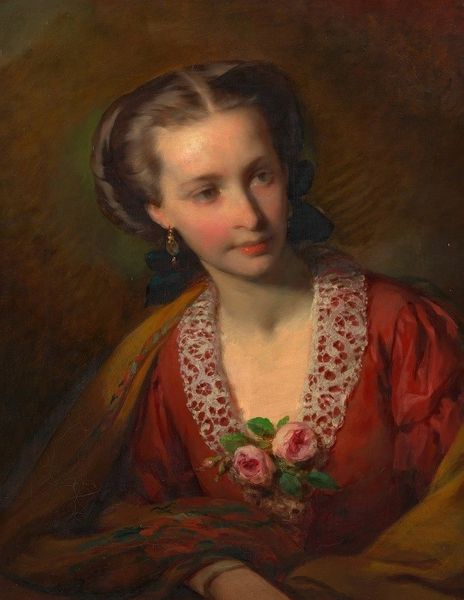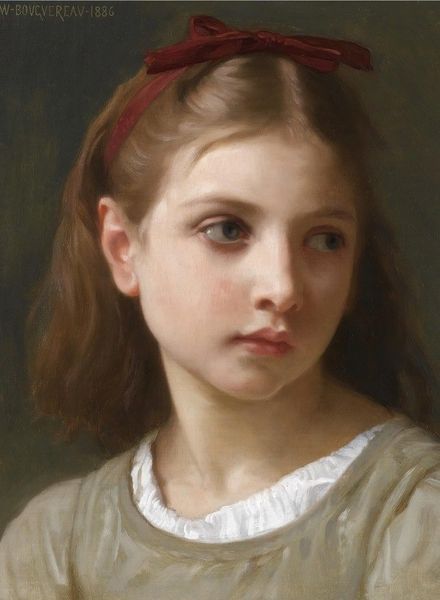
#
portrait image
#
portrait
#
portrait reference
#
portrait head and shoulder
#
animal drawing portrait
#
portrait drawing
#
facial portrait
#
lady
#
portrait art
#
fine art portrait
#
digital portrait
Dimensions: 45 x 39 cm
Copyright: Public domain
Curator: Standing before us is Orest Kiprensky's "Poor Lisa," painted in 1827. It currently resides in the Tretyakov Gallery in Moscow. Editor: My initial impression is just a profound sense of gentle melancholy. Her gaze is directed downwards, and there is something really delicate about the way she holds that tiny flower, as if it contains an entire universe of emotion. Curator: Kiprensky was a very successful portraitist, yet this painting deviates quite substantially from his commissioned works. While his patrons belonged to Russia’s high society, "Poor Lisa" seemingly portrays a common woman. There are other pieces with similar themes produced during that time; paintings and literary works focused on sentimentality were becoming increasingly widespread. Editor: It makes me wonder, was it just about depicting commonality, or was it something deeper, a kind of quiet revolution against the established artistic norms? I keep feeling that sense of sadness—and it isn't overstated. She almost feels modern. Curator: The title references a tragic character in Nikolay Karamzin’s famous novella of the same name. The story tells the unfortunate story of a peasant girl seduced and abandoned by a nobleman, which ultimately results in her suicide. Works like these encouraged a surge of sentimentality across Russia. This is especially evident in the noble classes adopting wet nurses of peasant origin. The idea of feeling, especially for the peasantry, was extremely fashionable! Editor: Fashionable sorrow, how wonderfully bizarre! And yet, that subtlety that really holds the emotional weight feels really at odds with any mere fashion trend, don’t you think? Look at her eyes: there’s a real depth there, something that transcends a simple portrayal of the sentimental or fashionable. She feels very knowable and immediate. Curator: Of course. Although such artworks contributed to a new vision for Russia, this can often seem contradictory to today’s viewer. Ultimately, regardless of the socio-political intent, it leaves a powerful visual experience. Editor: Right, because whatever the intent, there is just a deeply felt human connection. Looking at this piece, that’s the strongest thing that hits me. What about you? Curator: For me, reflecting on the portrait in terms of Russian society brings even greater meaning to my perception of her silent sorrow.
Comments
No comments
Be the first to comment and join the conversation on the ultimate creative platform.
